#kharpert
Text
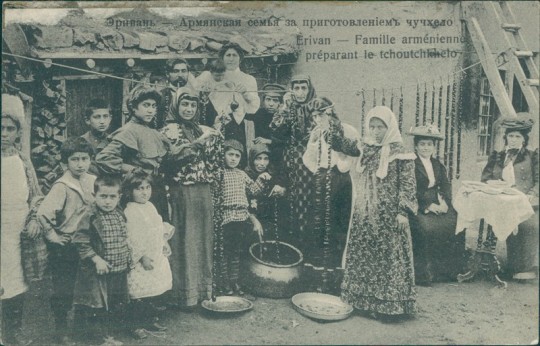
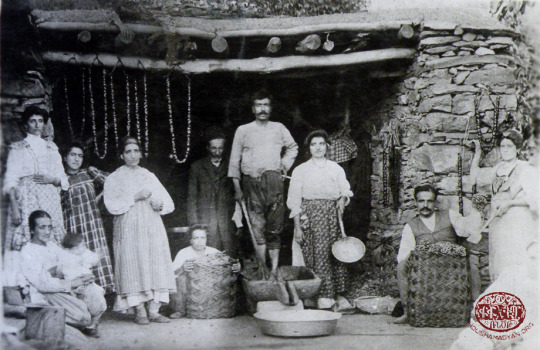
Yerevan. Armenian family making sujukh/sharots, 1900-1917.
Hussenig. An Armenian family preparing rodjig (sharots, cevizli sucuk; grape juice and nut roll) and basdegh (pestil; fruit leather).
91 notes
·
View notes
Text
Sesli Meram #457 - Yersiz Yurtsuz (29.04.2024)
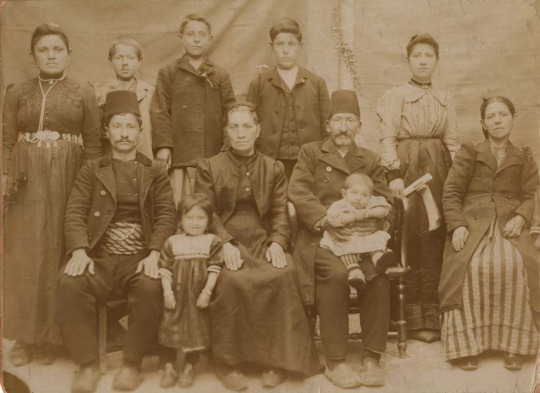
"Doğrudan yüz dokuz yıl önce bu topraklarda insan eliyle var edilebilecek ender / sınırları belirsiz bir karanlığın / adıyla sanıyla bir kıyametin varlığının nasıl da “güncel” bir mesel olduğundan bahis açılabilir pekala. Yılın üç yüz altmış beş gün altı saati, ömrü hayatın bir biçimde tamamını Ermeni kimliği ile yaşamaya mecbur olanların o yaralarına edilmedik, söylenmedik hakaret konulmaz. Bu satırların yazarı olagelen benim kan bağım olan on bir kardeşten, bilinen yedisinin katledildiği bir Sebastia gerçekliğini sormak, el aman değil bir tek anlığına dahi olsa o karanlığı düşünmeleri için komşularımızı davet etmek hala ve hala nedensiz değil afaki bir Anadolu İrfanı ile linç edilir. Düpedüz baskın / basmakalıp, kendini ezberlerinde var eden ve “tehcir bayramınız kutlu olsun” gibisinden, yetimliğimiz için en ağza alınmayacak tehditleri var edenlerin, küfre tutunanların daha önceki yıllardan tecrübe ettiğimiz gibi on sekiz yaş altı çoğunlukla çürümüş bir ideolojinin / atsız, turancı, bozkurt falan diye katara dizilen bir istikametten çıkış yapan hevesliler olduğu meydana çıkar. Bunca rezil kepazeliğin içerisinde yaşam her gün derdest edilirken, o küfürleri ede durana da, hakaretleri saydıran tiplemeleri de bulurken bu cerahat haline arka çıkmaların bir sonu gelecek midir? Üstelik zaman ve dahi yıkım onları da ayrıştırmadan var edilirken sahiden bir son gelecek midir?" sesli meram
podcast image credit: kharpert:::ermeni bir aile:::kaynak:::ermeni soykırımı müzesi-enstitüsü
#sesli meram#durum#günce#hayat ne olacak#türkiye gerçeği#biyopolitika#demokrasi#adalet#özgürlük#akp#iktidar#tahakküm etme#yıldırı#zor#azınlıklar#tehdit#karabasan#düşmanlaştırma#politikmeram#anlam#anarşizan#nefret söylemi#politik mücadele#sözcükler#kötülük sarmalı#hayat nereye#mücadele#sözhakkı#deneyselişler#demokrasinereye!
0 notes
Photo
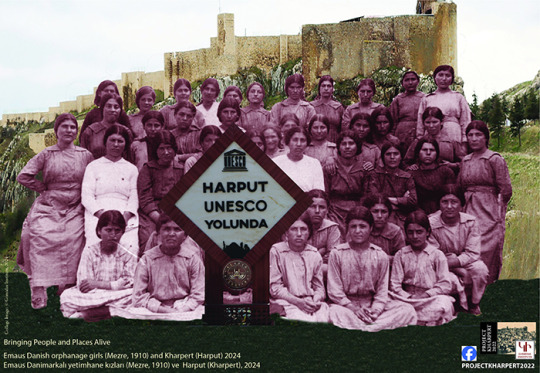
New Post has been published on https://massispost.com/2024/03/statement-from-projectkharpert2022-kharpert-and-its-forgotten-armenians/
Statement from ProjectKharpert2022: Kharpert and Its Forgotten Armenians?

One of the taboos haunting the current authorities of Elazig – especially as they seek UNESCO designation for the city of Kharpert (Harput) as a World Heritage Site – concerns the historical presence of Armenians in that city. Rather than coming clean and dealing with the matter head on, they continue to deny the Armenian heritage of the entire region. We contacted Turkish authorities in Elazig and offered to work with them to reintegrate the memory of Armenians back into Kharpert. However, we did not receive a response, and they continued to proceed as before. The Elazig authorities still maintain…
0 notes
Quote
Layn djagad ellas, gamar ounkvi ounenas, khoshor achvi, yergayn tartich ellas, pats peran chelas, kich khosis, shad lsogh ounenas, amragour grtski, sona boylu yev jarbig ellas.
[May you have a wide forehead; may you have high eyebrows; may your eyes be large, your eyelashes long. May you not have a gaping mouth; may you speak little, but have many listeners. May you have a wide chest; and may you be tall and clever.]
Khoroung gartatsogh ellas, krchet grag tsadge, Asdzo yergughn ounenas yev hatset trutyamp vasdagis.
[May you be a deep reader; may fire spark out of your pen; may you know the fear of God, and may you earn your bread with ease.]
blessings on the occasion of the birth of a boy in Agn, Kharpert
18 notes
·
View notes
Link
Five years after having first presented a substantial group of recordings by Kemany Minas from February 1917, the Canary album I made was heavily revised twice due to obsessive research by Harry Kezelian and Harout Arakelian. Recently a group of early Minas performances from Dec. 1916 arrived as part of the legacy of Christine Gabaly, and I revised the album yet again (now comprising his nearly-complete discography, lacking only the two takes of his performances of the song "Memo"), this time giving the notes entirely to Harry Kezelian, whose amazing work deserves a feature in the LA Times, New Yorker, NY Times, Washington Post, Philadelphia Inquirer, NPR or some similar outlet. It is an absolute masterpiece of what is commonly called "rediscovery" of early 20th century music by a performer who I said for years we'd never know about. I was wrong. I'm happy to share it with you:
====== Sixteen discs made in eleven months have survived for more than a century with the name Kemany Minas Effendi on their labels. Lacking a surname - “kemany” and “effendi” are titles, making him “violinist Mr. Minas” - this great artist remained an enigma for many years. The identity of Minas has been ascertained from scraps of information in out-of-print Armenian books and newspapers, as well as oral history from Udi Richard Hagopian of California.
Minas Chaghatzbanian arrived at Ellis Island at the age of 26 on July 13, 1913. Destined for Providence, Rhode Island, he had left behind his his wife Varter in Malatia, Turkey.
Arshag Alboyadjian’s “History of the Armenians in Malatia” (published 1961 in Beirut) includes the first mention of Minas as a performer, only two months after arriving:
“The one united [Malatia club] picnic of Attleboro and Franklin [Massachusetts] was a singular and unforgettable affair for its type. In 1913 at the well-known farm belonging to the Urfatsis [Armenians from Urfa], that picnic took place, where more than 200 Malatia natives were present, from surrounding towns. The lavishness of the specialty dishes and drinks of Malatia was beyond measure. The famous and prematurely-deceased violinist Minas Chaghatzbanian was there. The merry-making had neither measure nor bound. [Visiting geologist] Professor Mugerdich Vorperian [of Malatia] was also there, who in that period had come to America for the purpose of taking certain classes. Professor Vorperian spoke, issuing a call to the Armenian community, to not remain in foreign lands, but return to the Homeland. The poor Professor himself returned and became a victim of the wolves and hyenas. Doctor Garabed Yazmajian also spoke at that picnic, and issued a call to those present, that they should give vigor to the patriotic purposes adopted by the Society. On the occasion of that picnic, a sum of nearly 900 dollars was collected, which was an amazing thing in those days, and could only have taken place thanks to the sacrifices of the natives of Malatia.”
By 1914 Minas was living in the Back Bay section of Boston and working at Bedros Boyajian’s Arevelyan Surjaran (Oriental Coffeehouse) in Boston first at 32 Tyler and then at 84-A Harrison Ave. A June 24, 1914 ad in the Armenian-language newspaper Azk (the Nation) read:
“We are informing the Armenian community of Boston and the vicinity that we have reopened our Armenian Coffeehouse, where food will also be served at certain times of the day. First-rate kebabs and choice dishes. The famous violinist Mr. Minas Chaghatzbanian will play choice Oriental pieces in the coffeehouse. Call the Chaghatzbanian band for weddings, picnics, and other celebrations. - Bedros Boyajian, proprietor.”
December 6, 1916, Kemany Minas made his first recordings for the Victor Company at the age of 29 or 30, both as a vocalist and a violin-playing accompanist to Diyarbekir-born singer Karekin Proodian along with two shadowy figures named Morene (kanun) and Hagop (oud). We guess that “Morene” is a misspelling of Zaven Yapchaian, a native of Kharpert, Turkey who made several solo recordings in the early 1940s. It is not out of the question that the oudist Hagop was James (Puzant) Nazaretian, known as Jimmy Nazareth, a native of Adana, Turkey, although according to his student Emmanuel Baghdayan, he didn’t start playing the oud until he was done with his US Navy service toward the end of 1919. Of the 12 sides recorded that day, Minas was soloist on six. On those six sides, he performed one folk song “Memo” and five gazels in makams Oushak, Hijaz, Huseyni, Sabah, and Rast.
By the time of those recordings, the Armenian genocide had been ongoing for over a year. Minas’s wife Varter may have already been killed. If Minas hadn’t read reports the fate of the Armenians of Malatia, the statement in Viscount Bryce’s Blue Book report to the British Parliament in October 1916, widely reprinted in the newspapers, was clear: “The same barbarities have been committed everywhere, and by this time travelers find nothing but thousands of Armenian corpses all along the roads in these provinces. A Moslem traveler, on his way from Malatia to Sivas, a nine hours journey, passed nothing but corpses of men and women. All the male Armenians of Malatia had been taken there and massacred; the women and children have all been converted to Islam.” The best Minas could have hoped for his wife was forced conversion or abduction.
Armenians in America were tormented. They hoped for the best, but their worst fears turned out most often to be true. Their loved ones and homes were gone. As Minas sang (in Turkish) in the 1916 piece “Chifte Telly Gazel,” “karibim, vatanim yok, vatanim yok” (I’m an exile, I have no homeland, no homeland).
More common in the 19th and early 20th century than it is today, the gazel form is essentially a vocal taksim (structured improvisation), in which the singer employs a piece of poetry as a vehicle for vocal improvisation within a given mode, as in Arabic mawwals and Greek amanades. Successful performances demonstrate both emotional power and skill in delineating the framework of the mode. As a semi-professional Armenian musician from the backwaters of Eastern Anatolia, Minas was a deeply impressive vocalist. He profoundly understood the modes and delivered the verses he selected (often relating to exile) with emotional verve. Although clearly never classically trained, he likely sang in the Armenian church as a boy, when the Eastern modes were still being used to sing the liturgical services everywhere in Anatolia, each Ottoman maqam having an equivalent in the the Armenian liturgical modes.
Minas recorded again in November 1917 for Columbia Records in joint sessions with singer Garabet Merjanian (a native of Kayseri). Richard Hagopian, keeper of the Armenian-American community’s musical oral history, informs us that the brilliant violinist Harry Hasekian (a native of Marash) performed on “most of” the Kemany Minas sides, and certainly about nine sides appear to have Hasekian accompanying Minas. Among the other Minas’s other accompanists at the sessions were Thomas Takis, a Greek clarinet player (apparently a native of Smyrna) and Looder Hampartzoumian (also known as Luther Artinian), an Armenian native of Chomakhlou who played the saz, each of whom accompanied Minas on gazels.
Among the performances he recorded at those sessions was a re-recording of “Memo” (not issued until years later as the flip side of a Turkish-language disc by the Greek singer Marika Papagika), one sharki, “Seni Gordukje Titriyor Yuregim” (Upon Seeing You My Heart Trembles), an Istanbul classic with music by Roma violinist Bulbuli Salih and lyrics by Armenian singer Hanende Hadji Garabet, and seven kef songs - party-time dance numbers, delivered with a palpable smile. On “Sheker Oghlan” (I’m In Love With You, Sweet Boy), a popular song known throughout Anatolia, Minas ventures into the realm of the dirty joke, describing the intimacy between a boy and a girl for whom he burns. Minas was in great spirits (and probably full of liquid spirits) during the recordings. We can imagine it was these songs or ones like that that he played at the at the Massachusetts Malatia club picnic in 1913. Richard Hagopian has said Minas was a single man, a “bekyar martig” (bachelor) in Armenian. These lone working-class immigrants were known for their life of partying, gambling, hanging out at coffeehouses and restaurants, becoming friendly with belly dancers, and so on. Minas wasn’t born to suffer. He was born a ham. Armenians have often dealt with their sorrow through comedy. It is part of the national psyche.
His Columbia discs all sold well, but his most enduring hit was not a party song, It was his response to the ongoing genocide in the form of a song dating back at least to the 1850s, “Eghin Havasi.” Originally the lament of an Armenian woman whose husband had gone abroad as a migrant worker and never returned, sung in both Turkish and Armenian, it originated in the town of Egin (Agn in Armenian) in the province of Kharpert. It was Minas’s masterpiece and among the best-selling “ethnic” recordings in the U.S. in the 1910s-20s until Columbia deleted their Armenian and Turkish catalog, taking on new meaning for Armenians in America.
Its reimagining was derived from the 1894-1896 Armenian massacres ordered by Sultan Abdul Hamid when the Bank Ottoman in Constantinople was seized by a group of Armenian revolutionaries under the leadership of “Papken Suni” (his nom de guerre), a native of Agn. In reprisal against the freedom-fighter’s native town, orders were given “to take the necessary action,” upon which the military engaged in a 48-hour massacre, in which upwards of 2,000 Armenians were killed, 980 of the 1,150 houses were torched, and “all were pillaged.” Armenians assembled in their church and “offered up special prayer owing to the great fear prevalent in their town,” but their religious plenipotentiary was “compelled by the authorities, under pain of death, to telegraph to the Patriarch that the Armenians were responsible for the outbreak there.” (Quotation from Vahakn Dadrian, Warrant For Genocide).
In the wake of the 1896 massacre of Agn, the lyrics were re-written: “Egin de veran olmush, bulbul eotmuyor” (Egin is in ruins, the nightingale doesn’t sing). Minas Chaghatzbanian was about 10 years old at the time and living in a city about 87 miles to the south. His performances includes those lyrics blended with the earlier emigration narrative: “benim yarim cevresine sarsinlar” (let them wrap me in my beloved’s shroud).
In an essay called “Gardens of Our City” written decades later by Hagop Asadourian (born in Chmaklou in 1903), a genocide survivor, rug merchant, writer, and amateur singer, described an Armenian picnic in Van Cortlandt Park in the Bronx:
“Gradually, the smoke of barbecued lamb would saturate the atmosphere and mix with the other smoke of burning memories! At that point, joining this mixture would be the sonorous voice of [tenor Armenag] Shah-Mouradian, singing ‘Hayasdan,’ pouring out of the throat of a ‘morning glory’ phonograph! You would then hear the ‘Groong’ (Crane) of Zabel Aram [Panosian], and especially a Turkish-language andouni (emigrant song) called ‘Egin Havasee,’ springing forth with sad fluctuations from the depths of kemanchist Minas’ soul:
Yar, seven years have passed since you left All the trees you planted have given fruit Those who went with you have returned home Come back, my love, come quick, don’t be a stranger Whoever “invented” exile, may he never see heaven…
Minas, a talented and wounded andouni (homeless one) himself, having just fallen out of his nest, how sadly would he mix his voice to the dolorous strings of his own violin! What a soulful rendition of that heartrending andouny. A song that was written, one felt, for this very group, to express this very condition of theirs. A song, mixed now with forgotten, distant sounds, echoing through the trees and bushes of Van Cortlandt with surges of grief. Only to bounce back in broken waves and then submerge into the hearts of …. Chomakhlou and Evereg, Kayseri and Sepastia, Gurin and Garin!” -Hagop Asadourian, “Gardens of Our City” Despite Asadourian’s professed antipathy toward Turkish music, he managed to quote from memory not only the lyrics that Minas actually recorded but another verse from the same folk song with the same theme. Though the Armenians of Malatia were Armenian-speaking, every word sung or by Minas on his recordings is in Turkish, with the exception of the interjection “mayrig!” (mother!) in the first verse of “Eghin Havasi.”
Minas’s end came quick. Richard Hagopian has said that Kemany Minas was sick and came to Fresno, California for the climate. Alboyadjian’s book on Malatia lists Minas Chaghatzbanian among compatriots who died in Fresno. The March 22, 1918 issue of the Fresno-based Armenian-language newspaper Asbarez reported: “On March 14, in the Colfax Hospital, Minas Chaghatzbanian, 33, passed away from an illness of the lungs. The funeral took place out of Holy Trinity Church with Very Rev. Fr. Vartan officiating, and the body was placed in Ararat Cemetery.” Colfax death records have a “Minas Chagarchban” having died in Placer County at the age of 33 on March 14, 1918 four months after Kemany Minas recorded for Columbia.
1920s advertisements for Kemany Minas discs used the epithet “vaghamerig” (Armenian for “one who died too young”) or the Turkish, “merhum” (“the departed”). In 1947, S.M. Dzotsigian, a native of Agn and resident of San Francisco, in the section on Malatia in his encyclopedic work “Arevmdahye Ashkharh” (Western Armenian World) states: “The people of Malatia say that Violinist and Troubadour Minas is also from their city, although others give testimony as to his being from elsewhere. The popular dance-songs of this Troubadour Minas were recorded on phonograph discs.”
Minas’s Columbia discs remained in print for more than a decade after they were recorded and sold as well as any Turkish-language recordings did in the U.S. in the 1920s. Their influence was strongly felt on a generation of players who followed, particularly the Philadelphia kef groups including the Vosbikian and Arziv bands.
This is all we know.
2 notes
·
View notes
Photo

Harput (also called Karput, Kharput, or Kharpert) is an ancient town in Turkey, in the Ottoman Empire, falling under Mamuret-ul-Aziz Vilayet by the end of the empire; its site is now in the Elazığ Province. Artifacts belonging to around 2,000 BC were found in the area. The town is famous for its Harput Castle, and incorporates a museum, old mosques, a church, and the Buzluk (Ice) Cave. Harput was a largely Armenian populated region in Eastern Anatolia in medieval times. The ancient Kingdom of Sophene and later the Armenian province of Sophene laid in medieval Kharput. Harput is about 700 miles (1,100 km) from Istanbul. • #harput #elazığ #east #turkey #turkey🇹🇷 #turkeyphotooftheday #instaturkey #igersturkey #igturkey #travelturkey #travel #travelgram #travelblogger #travelphotography #igtravel #instatravel #traveler #traveling #travelgirl #wanderlust #wander #wanderer #wandering #wanderwoman #objektifimden #objektifimdenyansiyanlar #instablog #instablogger #handemondo #landscape (at Harput, Elazığ) https://www.instagram.com/p/COxeOYdrV-g/?igshid=lgwqi2bmdqi0
#harput#elazığ#east#turkey#turkey🇹🇷#turkeyphotooftheday#instaturkey#igersturkey#igturkey#travelturkey#travel#travelgram#travelblogger#travelphotography#igtravel#instatravel#traveler#traveling#travelgirl#wanderlust#wander#wanderer#wandering#wanderwoman#objektifimden#objektifimdenyansiyanlar#instablog#instablogger#handemondo#landscape
3 notes
·
View notes
Note
alstroemeria
Oh this one is TOUGH (dream vacation). It really depends on the circumstances? Like right now if I could go anywhere in the world I’d go back to my hometown because the pandemic makes it seem unlikely I’ll ever be able to return. But if we’re talking more of a “your life and the world is in good order, where do you want to go?” kind of deal - Armenia.
I want to go to the old country and visit all the sites I’ve spent years studying and dreaming and writing about. I want to cross into western Armenia and visit the city of Ani that I named myself after and walk in the streets of Elazig (once Kharpert) where my family came from. I want to go there with all of my partners and show them my roots and touch sacred ground and pray in Etchmiadzin cathedral at Vagharshapat. I want to see the sun set behind Mount Ararat and feel the wind off the mountains whipping across the plains. And then I want to come home and hold those places in my heart for the rest of my life, like my ancestors did before me.
1 note
·
View note
Text
Crescenta Valley Youth Center to Host ‘Artsakh Survival Scenario’ Presented by Giro Manoyan
New Post has been published on https://armenia.in-the.news/society/crescenta-valley-youth-center-to-host-artsakh-survival-scenario-presented-by-giro-manoyan-68945-04-02-2021/
Crescenta Valley Youth Center to Host ‘Artsakh Survival Scenario’ Presented by Giro Manoyan

ARF Bureau member Giro Manoyan
The Western Armenia Committee of the Crescenta Valley Meher & Satig Der Ohanessian Youth Center will host a Zoom & Facebook presentation entitled the “Artsakh Survival Scenario,” which will be presented by Armenian Revolutionary Federation Bureau member Giro Manoyan. The presentation will take place on Thursday, February 11 at 7:30 p.m. Pacific Time.
Manoyan will touch the 44-day war, which has substantially changed the situation in and around Artsakh, reversing major political, territorial, diplomatic, and other gains of the last 30 years. The republics of Artsakh and Armenia are facing new external and internal challenges and, in some instances, existential threats.
How can the Armenian nation overcome these challenges and threats? What urgent changes are needed? What are the options for Artsakh survival: Artsakh’s international recognition as independent country, joining Armenia, joining Russia or stay as it is?
Manoyan, a son of Kharpert and Dikranagerd, was born in Beirut, Lebanon. In 1976, he moved to Montreal, Canada and studied political Science at Concordia University. In the 1980s he was the Executive Director of the Armenian National Committee of Canada. From 1989 to 1991, he was the assistant editor, and from 1991 to 1999 the editor of the Horizon Weekly Canadian-Armenian newspaper. Manoyan moved to Armenia in 1999.
Since 2001, Manoyan has been the ARF Bureau Political Director in Yerevan. He was elected to the A.R.F. Bureau in 2015 and re-elected in 2019.
Below is the Zoom meeting information.
https://us02web.zoom.us/j/89032010858?pwd=WXdvVWZTRW5FT2JOaXpnVW54YXVydz09
Meeting ID: 890 3201 0858
Passcode: 070919
The Crescenta Valley Youth Center hosted a similar discussion in November, entitled “Current conditions in Armenia & Artsakh,” which was presented by Dr. Antranig Kasbarian. Watch the video of that talk below.
[embedded content]
Read original article here.
0 notes
Text
Amazing Armenian Foods You’ve Never Tried
Amazing Armenian Foods You’ve Never Tried

Levon Avdoyan grew up in Providence, Rhode Island, on what he thought was traditional Armenian food. In 1972, he moved to Soviet Armenia to study for a Ph.D. He said, “It was then I realized that Armenian food in the Caucasus was different from Armenian cuisine in historical Armenia.”
Avdoyan’s ancestors came from Kharpert in present-day Turkey. He grew up eating his grandmother’s pilaf, stuffed…
View On WordPress
0 notes
Photo
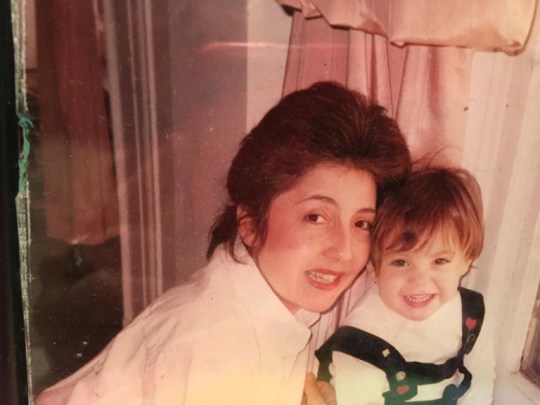
#SKYMomsDay Challenge, Happy Birthday Mom! My mom's birthday is in May, born in in Washington Heights, NY. She was named Iris, becuse May is the month that Iris flowers often bloom. Her mother was born in Kharpert, Turkey, and moved to New York in 1921 at 9 years old, with her aunts and uncles. We are who came before us and must remember to be grateful for the gift of life they’ve given us! Join me, and pay tribute to the Mothers in your life with the #SKYMomsDay Challenge. Share a picture and a tribute, and give a gift at tiny.cc/skymomsday to provide stress & trauma relief to families through skyschools.org up to $6K gets MATCHED until 5/10. Everyone who makes a gift will be invited to a special gathering featuring amazing mothers, and tools you can use! 😊🙏 https://www.instagram.com/p/B_vsVHig04S/?igshid=s3muhk5qogvl
0 notes
Video
youtube
Kharpert Kololak Meatballs - Armenian Cuisine - Heghineh Cooking Show
1 note
·
View note
Photo
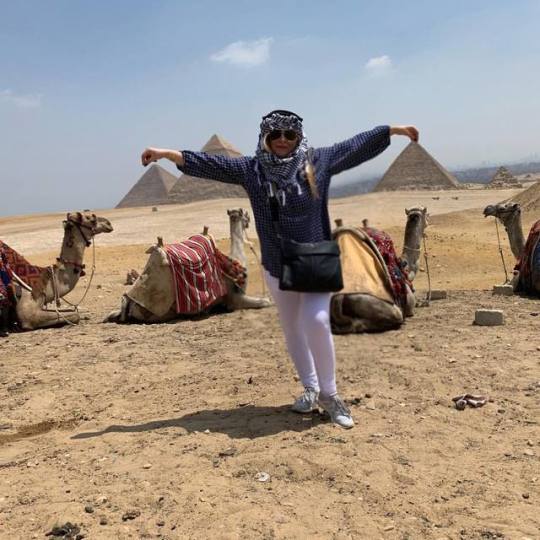
. . . Masr-Cairo, Egypt -Travelteck Group Part of Africa, Land of the Ancient Times on the Nile, The Giza Necropolis, THE THREE GREAT PYRAMIDS (the Khafu, The Kharpert & the Menkaure) the Great Sphinx - emblems of ancient Egypt, One of the Seven Wonders of the World! www.Travelteck.com Tours by Lara & Maro 818.549.9668 . . . (at Egyptian Pyramids) https://www.instagram.com/p/BwlrmAWDO19/?utm_source=ig_tumblr_share&igshid=y8aecx4kupvg
0 notes
Photo

New Post has been published on https://massispost.com/2024/01/naasr-to-host-online-talk-by-gregory-aftandilian-recreating-kharpert-in-massachusetts/
NAASR to Host Online Talk by Gregory Aftandilian “Recreating Kharpert In Massachusetts”

BELMONT, MA — The National Association for Armenian Studies and Research (NAASR) will host an online panel talk by Gregory Aftandilian, “Recreating Kharpert in Massachusetts,” on Thursday, January 25, 2024, at 7:30 pm Eastern / 4:30 pm Pacific. The webinar will be accessible live on Zoom (registration required) and on NAASR’s YouTube Channel. There is a special connection between Armenian Americans of Massachusetts and the Ottoman province of Mamuret ul-Aziz, which the Armenians called Kharpert. Kharpert Armenians began arriving in Massachusetts, particularly in the Worcester area, beginning in the mid-19th century, though the bulk of the immigration resulted from the…
1 note
·
View note
Photo

Based on the photos displayed in this Harput/Kharpert section, it turns out that Djerdjian was also in the region of Harput, with his trusty camera at his side, visiting the town itself and neighboring villages. This photo depicts the historic cemetery of Khoulavank. This information was sent to us by Samuel Karapetyan. We thank him for this. He compared this Djerdjian photo with another familiar photo of Khoulavank. The similarity is striking. The old stone crosses (khachkar) are destroyed and no longer exist. This, of course, imparts a new value to the Djerdjian photo. The locale is a few minutes east of Khoulakyugh village (Hulvenk/Şahinkaya).
8 notes
·
View notes
Photo
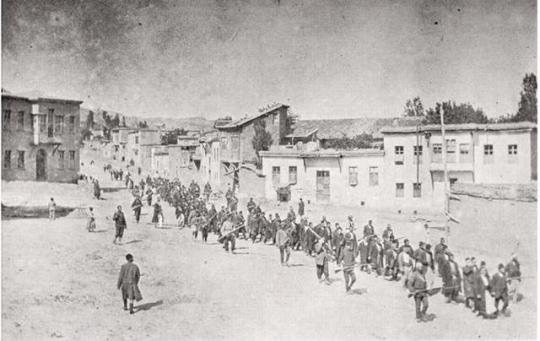
Armenian civilians are marched to a nearby prison in Mezireh by armed Ottoman soldiers. Kharpert, Ottoman Empire, April 1915.
106 notes
·
View notes
Link
NEW CANARY RELEASE Ebullient dance songs transplanted from the Golden Plain of eastern Anatolia to the San Jaoquin Valley of California. Research and notes by Harout Arakelian, an expert on 20th century Armenian musicians of the West Coast:
Label owner, bandleader, and musician Oscar (nee Asadour) Kevorkian was born in Kharpert (aka Harput, in present-day Elâzığ Province, Turkey) in 1898. He arrived to the U.S. via Ellis Island in 1914 and settled in Fresno, California. (His sister and brother both settled in France.) In 1918, he married Araxie (Mary) Daorian with whom he had four children. After working a variety of jobs, he started the OK Taxi company in the late 20s and drove hearses for the West Side Undertakers and the Yost & Webb Mortuary. In 1936, he started working as a funeral director for Yost & Webb. (He and a partner eventually bought the company around 1949. It's still in operation.)
In 1929, Kevorkian and the clarinetist Mesrob Takakjian recorded four sides for the Columbia label in Los Angeles, and during the 1930s they and their cohorts were regular performers at Armenian gatherings and parties in the Fresno area. Around 1938, they recorded again for the independent Rec-Art label, which apparently inspired Kevorkian to establish his own label, perhaps as early as 1939. He initially named it OK Records, named like his cab company from his initials, later changing the label’s name to Kevorkian.
A significant and influential clarinetist, Mersob Takakjian was born in either 1894 or 1896 in Palu (less than 50 miles from Kharpert) and arrived in Providence, Rhode Island Oct. 15, 1912. Takakjian was among the first wave of Armenian performers to have made discs for Columbia in the mid-1910s and continued to record in the early 20s for M.G. Parsekian and Vartan Margosian’s independent labels.
In the mid-20s, Takakjian loaned his instrument (mouthpiece, reed, and all) to another musician, resulting in Takakjian's contracting tuberculosis. For his health, he relocated to Fresno in 1926, where he got work as a record-buyer for the Nishkian Phonograph Store and went into business with his younger brother Sarkis selling novelties and candy. He met Oscar Kevorkian with whom he collaborated on music for more than twenty years. He was among the musicians recorded by ethnomusicologist Sidney Robertson Cowell for the WPA, University of California, and Library of Congress in 1939.
On July 5, 1959 Oscar Kevorkian had a heart attack while playing cards at the Highland Club in Fresno. He was dead by the time he arrived at the hospital. Mesrob Takakjian survived until 1976. (A more complete life and times of Takakjian is currently in progress.)
The singers:
Mary Keteian was born Nov. 17, 1925 to immigrant parents in Detroit. The family relocated to Fresno, where at the age of 22 she married
Grkikor Grisha “Kirk” Khanzadian with whom she had seven children. In 1949, she sang in Achoude Arzouni’s fantasy opera “Shepherd’s Dream;” her recording with Kevorkian may have been made around the same time.
Mike Krikorian was born in Fowler, California and relocated to Los Angeles, where he worked in the hotel business. He appears to have established the Yerchanig Records label in the early 1950s. Virginia Hampartzoomian was also born in Detroit to immigrant parents with whom she relocated to Fresno. She worked as a stenographer before marrying Jack Murachanian of Pasadena in 1951. She was a wedding singer and member of the Holy Trinity Church Choir in Pasadena.
1 note
·
View note